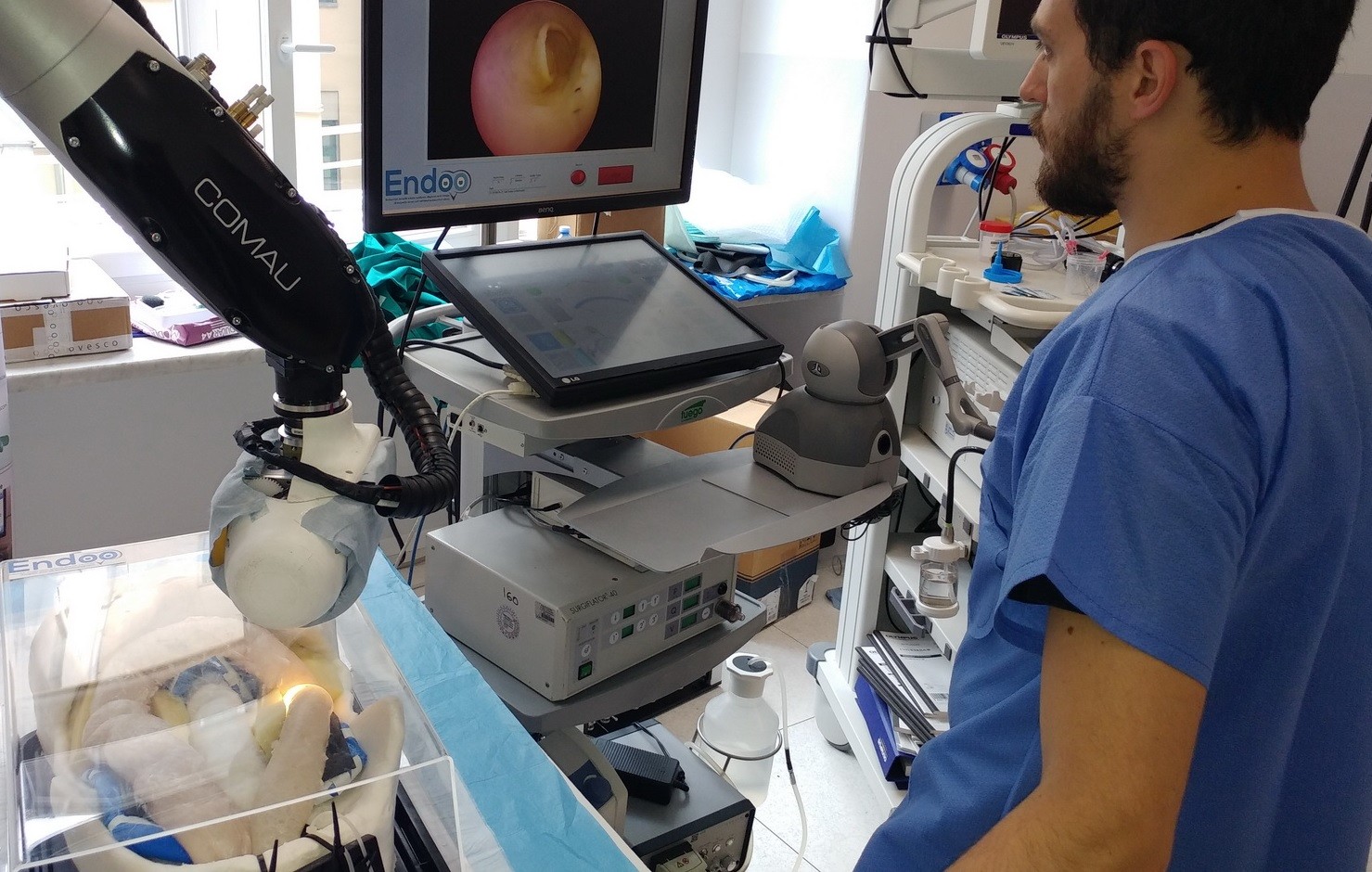Young GI Blog
The peaks and troughs of lower GI endoscopy training
December 15, 2020 | Giacomo Lo Secco

Giacomo Lo Secco is a young General Surgeon specialist, completing his PhD at the University of Turin. He is involved in a project about robotic surgery and operative endoscopy. During his residency, he had the chance to have intensive training in gastrointestinal endoscopy and operative techniques.
The fourth industrial revolution1 led to breakthroughs in the fields of biotechnology, robotics and artificial intelligence. All these advancements have been applied in medical practice as well. Today, gastrointestinal (GI) endoscopy in particular can2 count on better diagnostic quality, thanks to high quality images and the availability of new devices and accessories. It is now possible to analyse light‐tissue interactions, and we are close to histologic diagnosis during endoscopy. This procedure also gained ground in the operative field, with the development of new accessories and procedures that make endoscopists comparable to surgeons in terms of technical skill required. Today, with the use of ultrasound, endoscopists can perform biliary drainage, transduodenal cholecystostomy and even transmural resection of submucosal tumors. Recently, some authors reported successfully performed gastroenterostomy by endoscopy.
The same time that training programs took advantage of new technologies, simulators broke into GI endoscopy and are now included in many training programs. Nowadays, we have plenty of simulators that can be divided in live animal models, ex vivo animal models, synthetic models and virtual reality (VR) simulators. Each one has specific advantages and disadvantages and is employed in training programs with different focuses. The live animal models are of course the best platforms for training because the haptic feedback is the same as human tissue; additionally, secretions, respiratory movements, peristaltic contractions and bleeding replicate the usual clinical conditions while performing endoscopy. The drawbacks are mainly related to their cost, infrastructure requirements and ethical limits. Animal models are often used by experienced endoscopists who wish to learn new techniques. Ex vivo models represent a possible alternative to live animal models, with the advantage of a more realistic environment than synthetic models and a lower cost than VR simulators. Relative disadvantages are the disposal of tissue and the loss of some tissue characteristics. VR simulators represent the most up-to-date technological innovation in training, as they are equipped with sensors that reproduce user’s movements and effectors that give force and haptic feedback. The software can be programmed to evaluate specific clinical parameters for each type of procedure, e.g. the percentage of mucosa visualized or the time to complete a specific task. VR simulators are usually provided with several modules that train a specific ability and can also be upgraded.
Little by little, simulators won their place in training programs, along with the one-on-one training. The main advantage for trainees is that they receive constant close monitoring and feedback during skills acquisition. Moreover, trainees can practice entire clinical scenarios, discuss the indication, manage sedation and learn how to write a proper report under the direct supervision of their mentor. Many authors agree that most GI trainees perform enough procedures during their residency, more than recommended to reach the learning curve, making training on simulators not essential. The drawback of this teaching model is related to an increased patient discomfort during the procedure. Also, training procedures on patients are usually longer and can negatively affect the accuracy of the exam.
The main advantage of simulators is related to comfort, as the trainee has an ideal setting for risk-free practicing and can focus more on the learning process. Several studies reported that the use of VR simulators at the beginning of the training could accelerate the acquisition of some practical skills. The simulated environment allows to repetitively perform the intended skills and can provide focused feedback in order to identify and correct mistakes. Moreover, training can be focused on specific skills or on the improvement of acquired competencies. Simulation on ex-vivo models can be used to train advanced endoscopic procedures, such as polypectomy, and enhance endoscopic non-technical skills.
A recent review published by Khan R et al, analyses some methodological aspects to improve training programs on simulators. The authors’ conclusion is that the presence of an experienced mentor giving feedback to the trainee can maximize the potential learning benefits.
We have no conclusive data about cost analysis, since the systematic reviews available are conflicting. The VR simulators are certainly the most expensive training platforms available, but with a reasonable service cost. On the other hand, the one-on-one training also has its cost, as it is a time-consuming activity during the endoscopic exam and the mentor has to concentrate on the trainee and on the patient at the same time.
In conclusion, in order to achieve endoscopic mastery, simulator platforms should be included in a tailored training program with specific targets, along with the mentor’s supervision. This way, the one-on-one training and the simulator-based training would be combined to provide the best learning experience possible.
References:
- The Fourth Industrial Revolution, namely artificial intelligence, virtual and augmented reality, and the Internet of Things. National Academies of Sciences, Engineering, and Medicine; Policy and Global Affairs; The Fourth Industrial Revolution. Government-University-Industry Research Roundtable. Washington (DC): National Academies Press (US); 2017 Feb 28.
- ASGE Technology Committee, Goodman AJ, Melson J, et al. Endoscopic simulators. Gastrointest Endosc. 2019 Jul;90(1):1-12.
Khan R, Plahouras J, Johnston BC, et al. Virtual reality simulation training for health professions trainees in gastrointestinal endoscopy. Cochrane Database Syst Rev 2018;8:CD008237
Khan R, Scaffidi MA, Grover SC, et al. Simulation in endoscopy: Practical educational strategies to improve learning. World J Gastrointest Endosc. 2019;11(3):209-218




Please log in with your myUEG account to post comments.